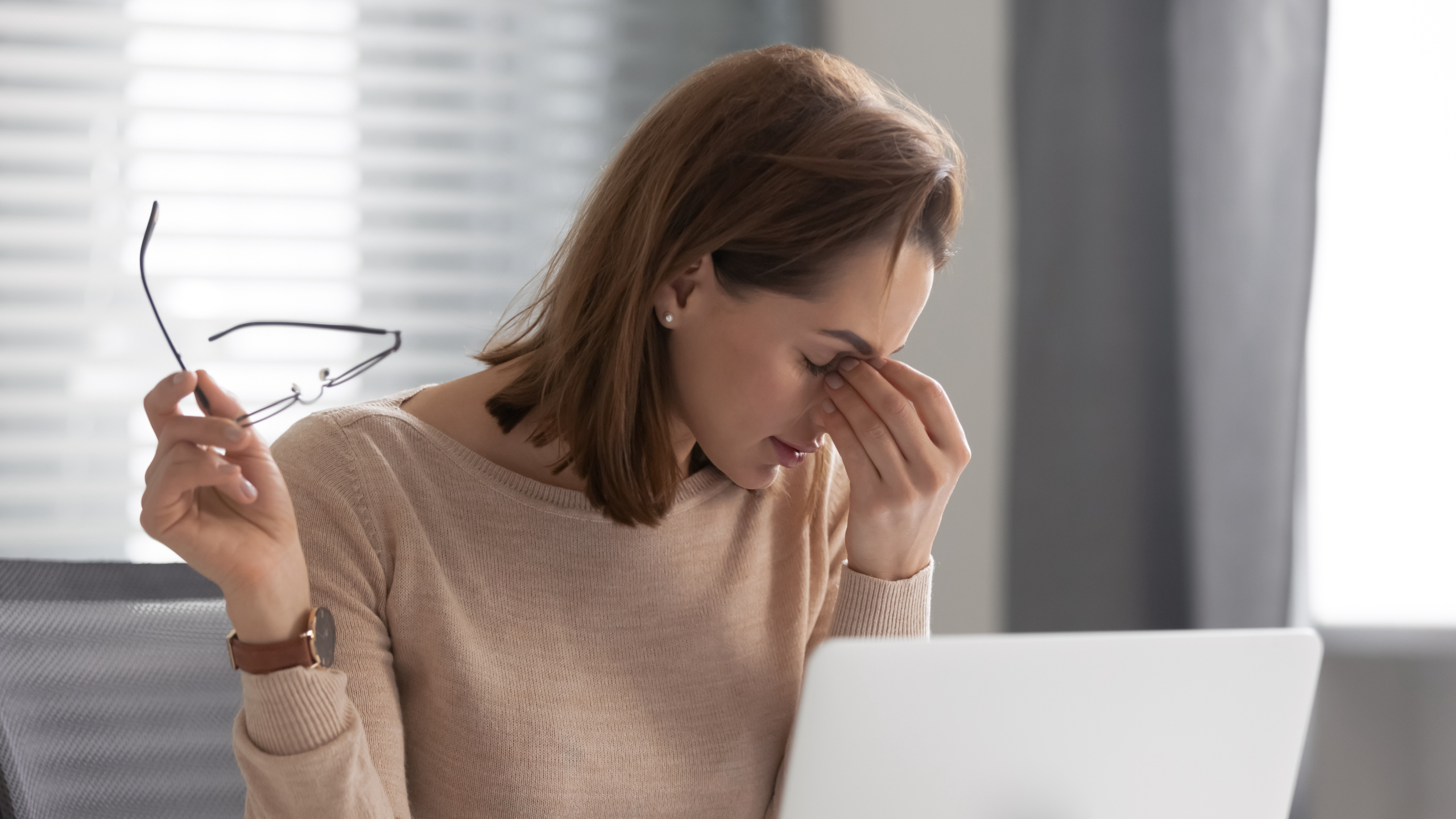Home / Eye Health /

Digital eye strain and the 20 20 20 rule
Digital eye strain (DES) is a common condition that affects people who use digital devices for extended periods of time. It is characterized by a variety of symptoms, including eye strain, blurred vision, headaches, and dry eyes.
There are a number of factors that can contribute to DES, including:
- Uncorrected refractive errors. If you have nearsightedness, farsightedness, or astigmatism, you may be more likely to experience DES. This is because you may have to strain your eyes to focus on a computer screen or other digital device.
- A prolonged period of staring at a screen. When you stare at a screen, your eyes have to work harder to focus. This can lead to eye fatigue and strain.
- Poor lighting. If the lighting in your workspace is too bright or too dim, it can make it more difficult to focus on a screen. This can also contribute to DES.
- Poor posture. If you sit hunched over your computer or other digital device, it can put strain on your neck and shoulders. This can also lead to DES.
- Medical conditions. Individuals who have certain medical conditions, such as dry eyes, cataracts, and macular degeneration, are at an increased risk of experiencing digital eye strain (DES). These conditions can impede one’s ability to focus on a screen, consequently leading to eye strain. Furthermore, these conditions can result in reduced blinking frequency, leading to dry eyes. This can aggravate DES by causing further discomfort and irritation, which may initiate a self-perpetuating cycle that can exacerbate the severity of DES.
There are a number of things you can do to help prevent DES by using the 20 20 20 rule:
- Take breaks. Every 20 minutes, take a 20-second break to look at something that is at least 20 feet away. This will help your eyes to relax and refocus.
- Adjust the lighting. Make sure that the lighting in your workspace is not too bright or too dim. You may also want to use a glare filter on your computer screen.
- Get up and move around. Get up and move around every 20-30 minutes. This will help to improve your circulation and reduce muscle tension.
- Take care of your eyes. Make sure to get enough sleep and eat a healthy diet. You may also want to use artificial tears or eye drops to keep your eyes moist.
- See an eye doctor. If you are experiencing symptoms of DES, you should see an eye doctor. They can help you to determine the cause of your symptoms and recommend treatment options.
Here are some additional tips for preventing digital eye strain:
- Position your computer screen so that the top of the screen is at eye level.
- Use a larger font size.
- Make sure that your computer screen is free of glare.
- Take breaks to look away from the screen every 20 minutes.
- Blink frequently.
- Use artificial tears or eye drops to keep your eyes moist.
- Get regular eye exams.
If you have any of these medical conditions, you may be more likely to experience DES. If you are experiencing symptoms of DES, it is important to see an eye doctor. They can help you to determine the cause of your symptoms and recommend treatment options.
https://www.aao.org/eye-health/tips-prevention/what-does-20-20-vision-mean

